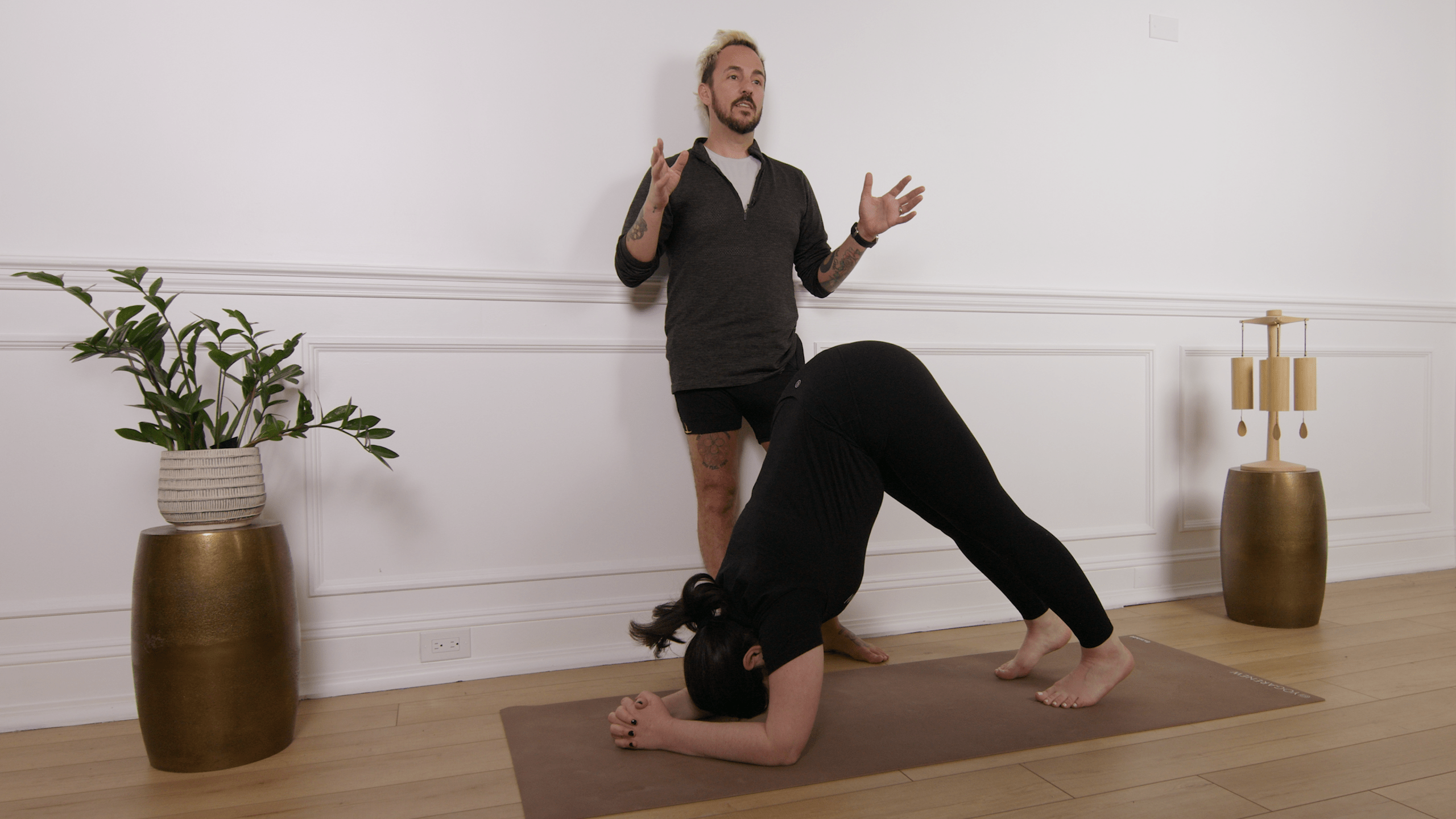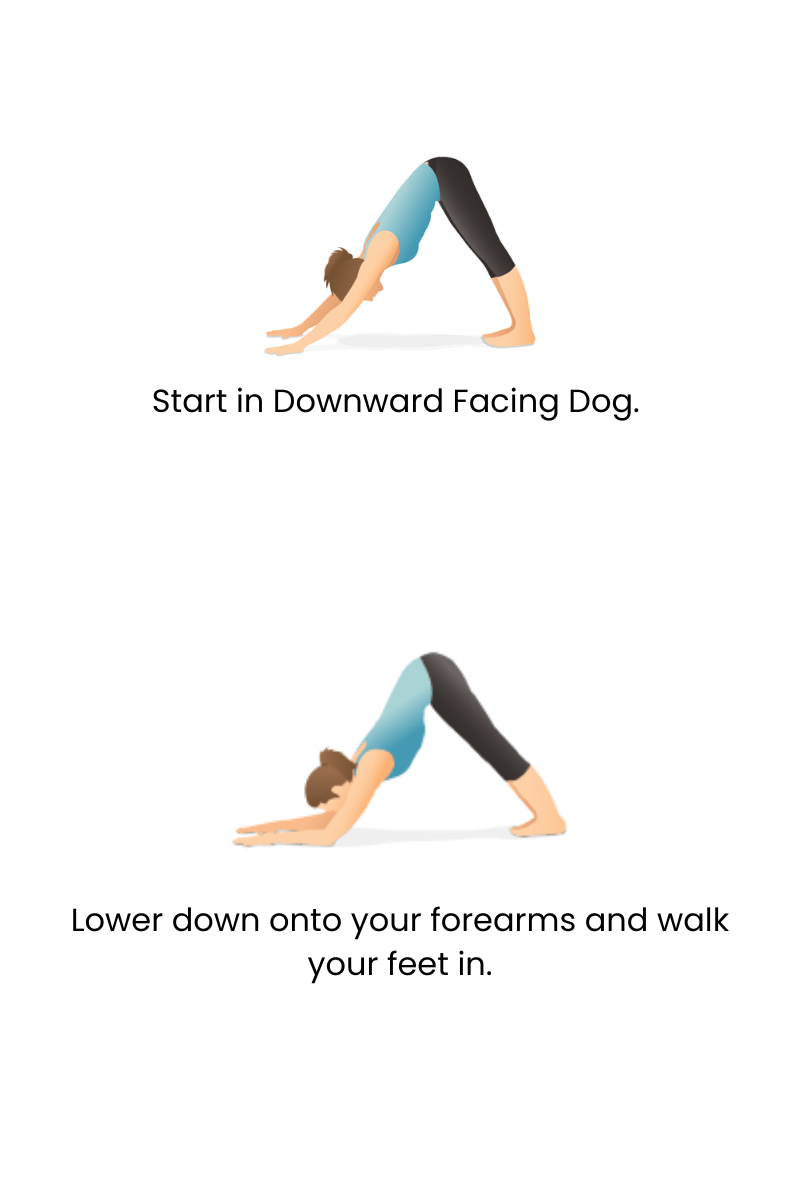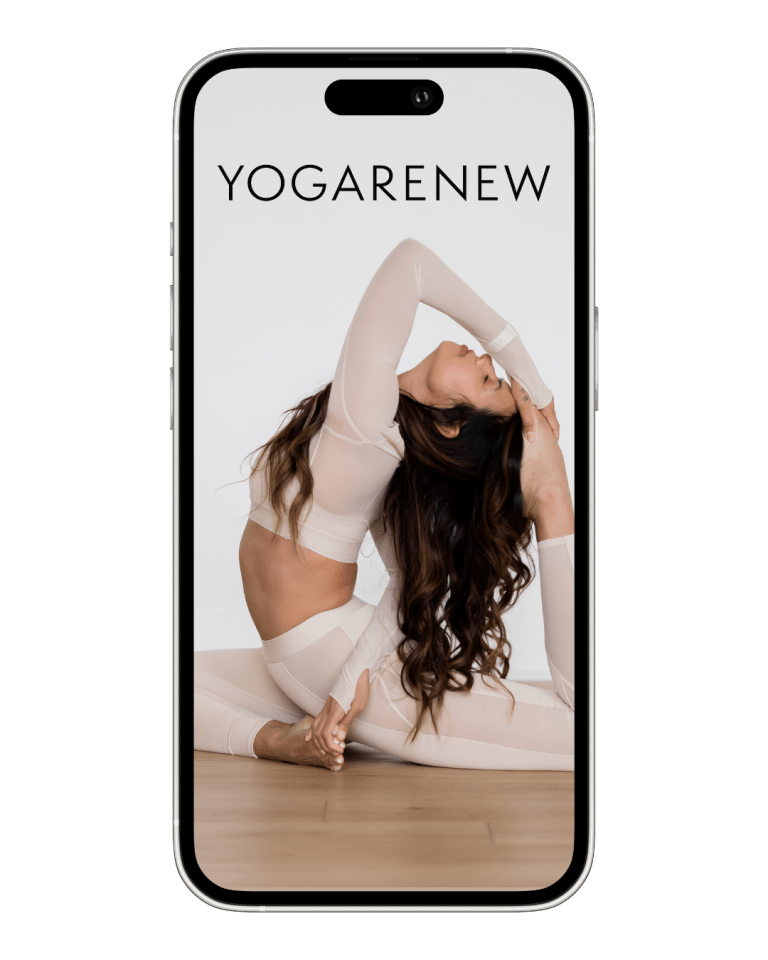What is Dolphin Pose?
English Name: Dolphin Pose
Sanskrit Name: Ardha Pincha Mayurasana (pronounced ARE-dah PEEN-chah my-YOUR-AHS-uh-nuh)
Category: Foundational, Inversion Prep, Strength, Beginner

English Name: Dolphin Pose
Sanskrit Name: Ardha Pincha Mayurasana (pronounced ARE-dah PEEN-chah my-YOUR-AHS-uh-nuh)
Category: Foundational, Inversion Prep, Strength, Beginner
Dolphin Pose, or Ardha Pincha Mayurasana, is a forearm-based inversion prep pose that builds shoulder strength, stretches the hamstrings, and cultivates stability through the upper body. It’s often used as a stepping stone toward more advanced inversions like Forearm Stand (Pincha Mayurasana) or even Headstand.
A staple in many yoga practices, Dolphin Pose encourages active engagement of the core and shoulders while maintaining a deep hamstring and spine stretch. It helps increase body awareness and upper-body strength—making it a versatile posture for both beginners and seasoned practitioners.


Dolphin Pose is a dynamic and accessible way to build upper-body strength, lengthen the posterior chain, and prepare the body for inversions—without the strain on the wrists that Downward Dog might bring. It sharpens alignment, focuses attention on breath and control, and energizes the entire body. Whether used as a stand-alone posture or part of a larger sequence, Dolphin is a powerful tool in any practice.
Yes—keep the knees bent and prioritize spinal length over straight legs.
Yes, though it requires engagement. Beginners can modify as needed.
Use Dolphin to strengthen shoulders and core, then practice leg lifts or wall-supported Forearm Stand transitions.

Explore classes & pose tutorials for any style, format, duration or experience level with a free account in the YogaRenew app. Or subscribe and gain access to workshops, live classes and more.